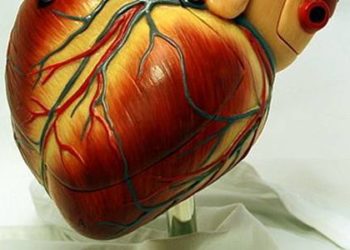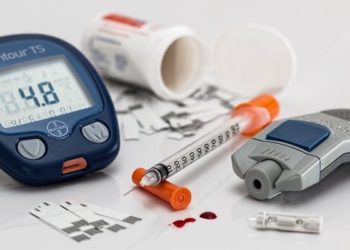2 Minute Medicine Rewind January 21, 2019
Individuals with Tourette syndrome (TS) and other chronic tic disorders (CTD) are at an increased of developing cardiometabolic disorders, in part due to the adverse effects of pharmacologic treatment, including antipsychotics. In this cohort study, investigators analyzed data from 7804 individuals with a diagnosis of TS or CTD in order to examine the association between these conditions and the diagnosis of metabolic and cardiovascular disorders. Affected individuals were compared to siblings discordant for these disorders. Investigators found that individuals with TS or CTD had almost double the risk of developing a cardiometabolic disorder compared to individuals who did not (hazard ratio adjusted for sex and age (aHR) 1.99, 95% CI 1.90 to 2.09). In terms of specific disorders, individuals with TS and CTD had higher a risk of obesity (aHR 2.76, 95% CI 2.47 to 3.09), type 2 diabetes (HR 1.67, 95% CI 1.42 to 1.96), circulatory system diseases (aHR 1.76, 95% CI 1.67 to 1.86). There was no associated increase in risk of dyslipidemia (aHR 0.87, 95% CI 0.75 to 1.00). The risk of cardiometabolic disorders was greater in males (aHR 2.13, 95% CI 2.01 to 2.26) than in females (aHR 1.79, 95% CI 1.64 to 1.96). The cumulative incidence of any cardiometabolic disorder was 52.5% for individuals with TS or CTD (95% CI 47.7% to 57.4%) in comparison to 29.5% for the general population (95% CI 29.3% to 29.6%). In terms of antipsychotic use, investigators found that the use of antipsychotic medication for more than 1 year was associated with a decreased risk of metabolic and cardiovascular disorders (aHR 0.27, 95% CI 0.17 to 0.43). Antipsychotic use for less than one year was not associated with a significant change in risk (aHR 0.83, 95% CI 0.56 to 1.24). Taken together, results from this study suggest that individuals with TS and CTD are at higher risk for cardiometabolic disorders. This study is limited in that it did not include information on behavioral variables such as sedentary lifestyle or smoking, or on non-pharmacologic strategies used for treating TS/CTD.
Diabetic nephropathy is a major concern for patients with diabetes and pre-diabetes. The neutrophil-lymphocyte ratio (NLR) in kidneys has prognostic value for cancers and diabetes, and may have utility as a predictor of kidney function decline. In this cohort study, investigators measured the NLR for 3112 individuals with diabetes and pre-diabetes and followed up their kidney function in order to examine the effect between NLR and estimated glomerular filtration rate (eGFR) decline, renal function decline (RFD), and chronic kidney disease (CKD). Investigators found that the incidence of rapid eGFR decline, RFD, and CKD over 3.3 years were 12.95%, 4.34%, and 1.57% respectively. Linear regression models showed that each unit increase in NLR was associated with a 29% (HR 1.29, 95% CI 1.14 to 1.45) increase in risk of rapid eGFR decline, a 33% (HR 1.33, 95% CI 1.09 to 1.63) increase in risk of RFD, and 69% (HR 1.69, 95% CI 1.21 to 2.38) increase in risk of CKD. The tertile of patients with the highest NLRs had higher risks of eGFR decline (HR 1.66, 95% CI 1.29 to 2.14), RFD (HR 1.58, 95% CI 1.02 to 2.46), and CKD (HR 2.29, 95% CI 1.00 to 5.21) compared to the tertile with the lowest NLRs. Overall, results from this study indicate that NLR may be an independent predictive factor for kidney function decline in patients with diabetes and pre-diabetes.
Gene expression profiling is a novel approach to identifying where cancers of unknown primary site (CUP) originate. Whether the use of gene expression profiling in directing site-specific therapy improves outcomes for patients with CUP, however, has not been well studied. In this randomized controlled trial, investigators randomized 130 patients to either site-specific therapy or empiric paclitaxel and carboplatin (PC) in order to examine the effect of gene expression profiling directed site-specific therapy on overall survival and progression-free survival at 1 year. Gene expression was used to successfully predict a tissue of origin for all patients. Investigators found that the median overall survival was 9.8 months (95% CI 5.7 months to 13.8 months) for the site-specific therapy group, and 12.5 months (95% CI 8.9 months to 16.1 months) for the empiric PC group (HR 1.028, 95% CI 0.678 to 1.560, p=0.896). The estimated progression-free survival was 5.1 months (95% CI 1.9 months to 8.3 months) for the site-directed therapy group in comparison to 4.8 months for the empiric PC group (95% CI 3.3 months to 6.5 months) (HR 0.884, 95% CI 0.590 to 1.326, p=0.550). In terms of subgroups, no subgroups showed a benefit of site-specific treatment for overall survival. An effect of site-specific treatment on PFS was suggested in patients with more-responsive tumor types, but results did not reach statistical significance (HR 0.696, 95% CI 0.316 to 1.534, p=0.396). Taken together, the results from this study suggest that site-directed therapy based on microarray profiling does not improve overall survival or progression-free survival compared to empirical treatment, although this study was limited in that there was an imbalance in predicted tumor types between the two arms. Stratification based on predicted tumor types may also be useful in future studies.
Association of Rates of Smoking During Pregnancy With Corporate Tobacco Sales Policies
Maternal smoking during pregnancy (SDP) is associated with a number of adverse birth outcomes. It is currently unknown how tobacco sales policies affect SDP. In this retrospective study, investigators examined SDP rates during fluctuations in tobacco retailer density (TRD) across 6 southeastern states in order to analyze the association between TRD and SDP. Investigators found that the SDP decreased overall during the study period, and that overall TRD increased during the study period. There were 2.7 more stores per 10,000 adults in counties with high TRD increase and 0.6 more stores per 10,000 adults in counties with lower TRD increase. Although there was an overall drop in SDP across the 6 state regions, counties with high TRD had a smaller change in SDP than counties with low TRD (-5.0% vs. -19.0%, p<0.001). The association between SDP change and high vs. low TRD was statistically significant across comparisons of counties with different rurality categories, socioeconomic status and/or social vulnerability categories, and tobacco-funding categories. A mixed-effects model showed that county-level TRD increase and socioeconomic vulnerability, and rurality had the largest effects on SDP decrease (t=2.81 p=0.005 for TRD increase, t=1.89, p=0.06 for socioeconomic vulnerability, and t=-2.69, p=-.007 for rurality). Overall, the results of this study suggest that increased TRD could impede the prevention of SDP. Of note, the states included in this study declined to adopt the Affordable Care Act Medicaid expansion in 2014, indicating that their low-income populations may have had limited access to smoking cessation and contraception programs; further studies are needed to generalize the results from this study to other regions.
Deviations from normal brain development may be implicated in certain psychiatric disorders, including schizophrenia. In this cohort study, investigators obtained genotype data and brain images from 1721 healthy adolescents, 157 patients with schizophrenia, and 149 unaffected siblings of patients in order to identify potential genes and brain structural changes associated with schizophrenia. Using a discovery cohort of healthy individuals, investigators found that a missense mutation in the gene SLC39A8 of SNP rs13107325 was associated with larger volumes in the bilateral putamen (left hemisphere t1705=8.66, p=5.35 x 10-18, variance explained = 4.21%; right hemisphere t1705=8.90, p=6.80 x 10-19, variance explained = 4.44%). The SNP rs13107325 has previously been found to be associated with schizophrenia, and as such, the investigators were able to replicate the positive association of SNP rs13107325 in the left putamen with data from 971 healthy adolescents (t964=3.70, p=1.16 x 10-4). The results of this study did not demonstrate an association with the right putamen (p=0.08). Carriers of the risk allele SNP rs13107325 had lower expression of SLC39A8 in the putamen (t127= -3.87, 95% CI -6.51 to -1.73, p=0.0002). In the clinical sample of patients with schizophrenia and unaffected siblings, the rs13107325-putamen association was significantly weakened. Taken together, results from this study show a rs13107325-putamen association in adolescent brains that is weakened in schizophrenia; disruption of the association may be due to other genetic factors for schizophrenia. As SLC39A8 encodes a solute carrier transporterZIP8, the results from this study provide a new pathway for studying schizophrenia.
Image: PD
©2019 2 Minute Medicine, Inc. All rights reserved. No works may be reproduced without expressed written consent from 2 Minute Medicine, Inc. Inquire about licensing here. No article should be construed as medical advice and is not intended as such by the authors or by 2 Minute Medicine, Inc.







